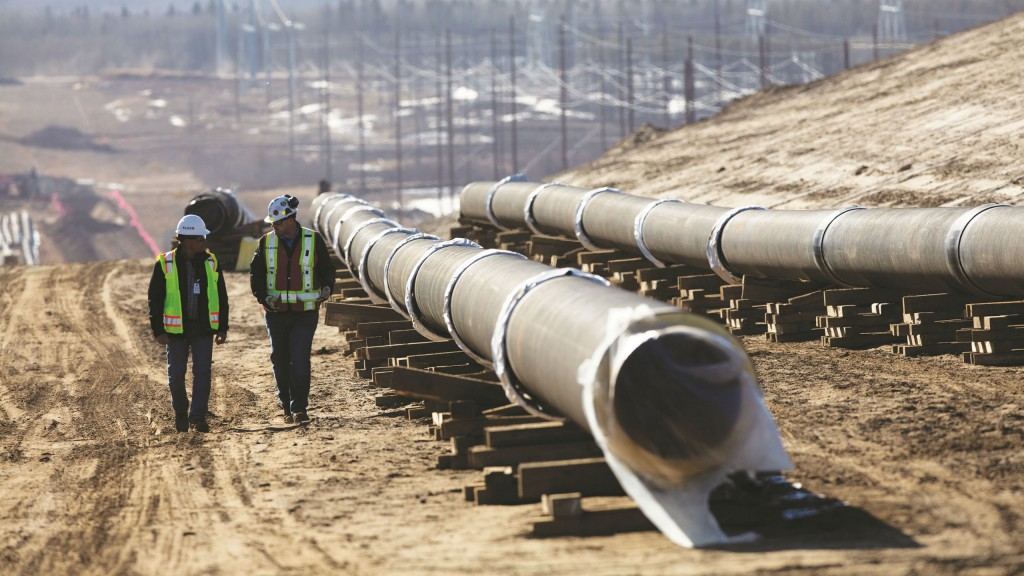Nigeria, Others To Spend $720bn In New Gas Pipeline Projects
Nigeria and six other regions across the globe are set to spend about $720 billion on new gas pipeline projects a report by Reuters quoting statistics from Global Energy Monitor (GEM) has said.
Six regions each have a share of 10 percent or more of the global expenditure total on gas pipelines already in construction or planned soon: North America, East Asia, South Asia, Sub-Saharan Africa, Eastern Europe, and Latin America, GEM data shows.
South Asia and Sub-Saharan Africa are set to see even steeper increases in gas pipeline network length once current projects are complete, growing by 88 percent and 282 percent respectively.
In Nigeria, the Ajaokuta Kaduna Kano (AKK) gas pipeline is the star project aimed at boosting economic activities and returning moribund companies to life.
Though, the 614-kilometer gas project earlier scheduled for completion in 2023 has recorded several setbacks due to insecurity and funding constraints covering 614 kilometer.
In April 2023, the Group Chief Executive Officer of Nigerian National Petroleum Company Limited, (NNPCL), Mallam Mele Kyari said about $1 billion was already committed to the project.
Also Minister of State for Petroleum Resources(Gas), Mr.Ekperikpe Ekpo, recently assured that the AKK gas pipeline project would be delivered between July and August 2024.
Ekpo, gave the assurance during a tour of the project site last October. The Minister further told the contractor to ensure completion within the July/August 2024 completion timeframe.
The GEM report added that more than $720 billion is going to be spent on building new gas pipelines with another $190 billion going into liquid natural gas (LNG) facilities, ensuring fossil fuels will retain a critical role in energy systems well beyond 2030.
North America tops the list in terms of planned expenditure with East Asia a close second but this is a truly global phenomenon.
Nearly every major region is boosting investments in the infrastructure needed to increase the use of natural gas in power generation, despite global efforts to transition energy systems away from fossil fuels. The investment sums involved – which have been committed to projects that are underway or are planned for the near future – reveal the powerful momentum that remains in traditional fossil fuel industries even as clean energy supplies are deployed at an accelerating rate.
Once completed, the pipelines and LNG import terminals will extend the use of natural gas for years to come and guarantee that fossil fuels will retain a critical role in key power systems well beyond 2030.
The geographic spread of natural gas pipelines is currently heavily concentrated in North America and Europe, which account for over 60 per cent of the global pipeline network.
However, the planned capital expenditure on future pipelines has a more global reach.
North America tops the list in terms of expenditure on current or planned projects at $106.4 billion.
East Asia, which includes China, Japan, South Korea, and Taiwan, comes in a close second with roughly $102 billion.
South Asia, Sub-Saharan Africa, and Eastern Europe each plan to spend more than $70 billion on gas pipelines, signifying substantial commitments to expanding natural gas use across several key economies.
North America’s current gas pipeline network is by far the largest, extending over 400,000 km (250,000 miles).
However, the continent ranks only sixth in terms of planned pipelines, with just over 11,000 km of pipelines under construction or planned.
That means North America’s network will grow by less than 3% once current and planned construction is completed.
In contrast, East Asia’s pipeline network will jump more than 50% once 68,000 km of planned pipelines are built.
Upon completion of the projects underway, East Asia’s gas pipeline network will be close to 200,000 km, and it will be the second largest region for gas pipelines after North America.
Such a widening in East Asia’s gas network should lead to a sharp increase in gas users – ranging from households to factories to industrial plants – that have switched away from burning other forms of energy.



Comments are closed.